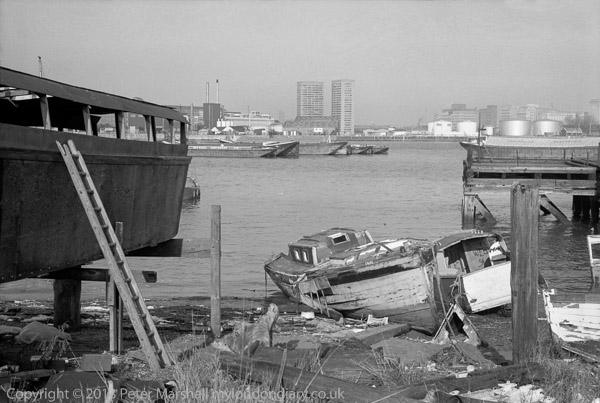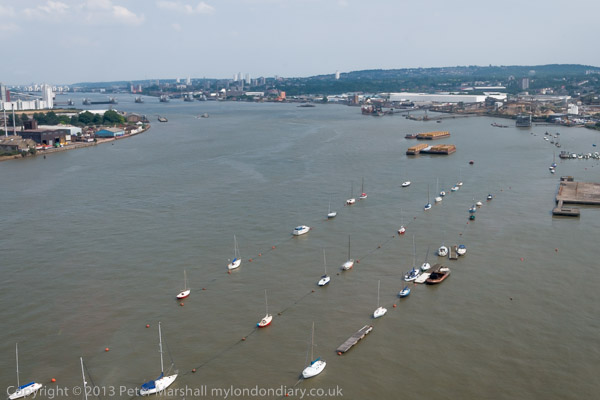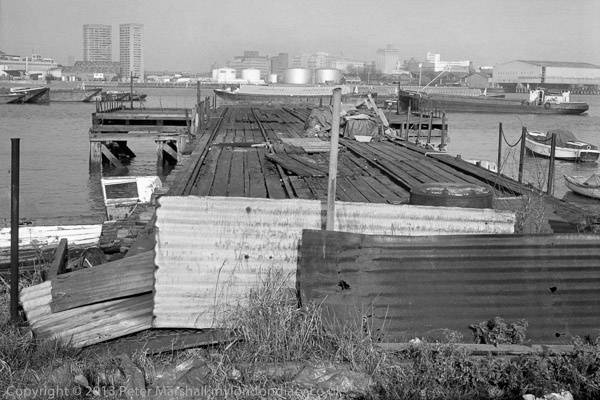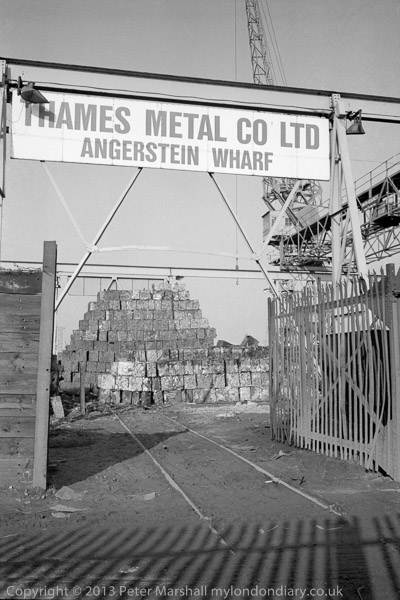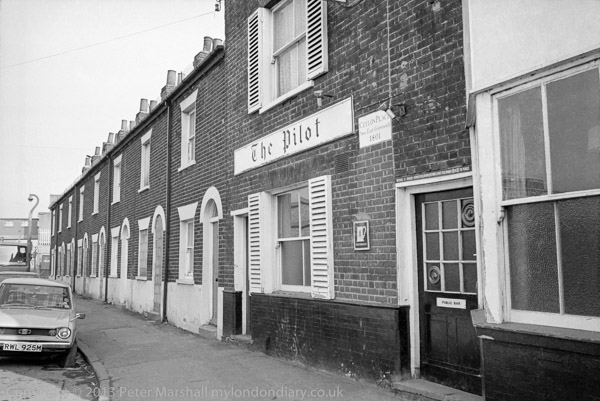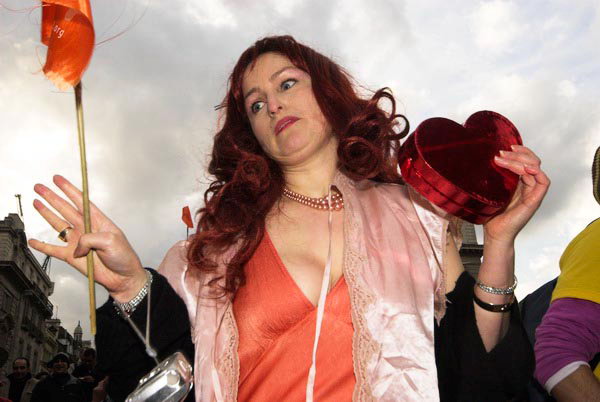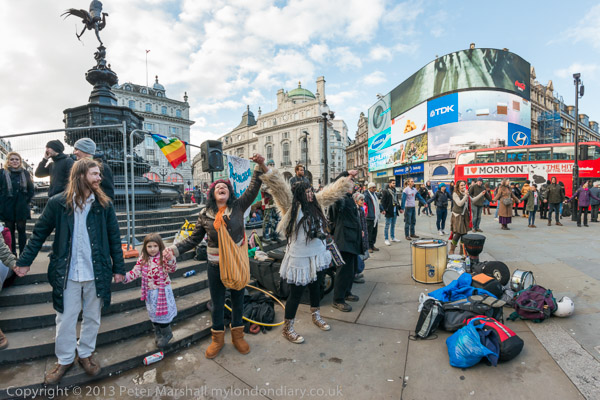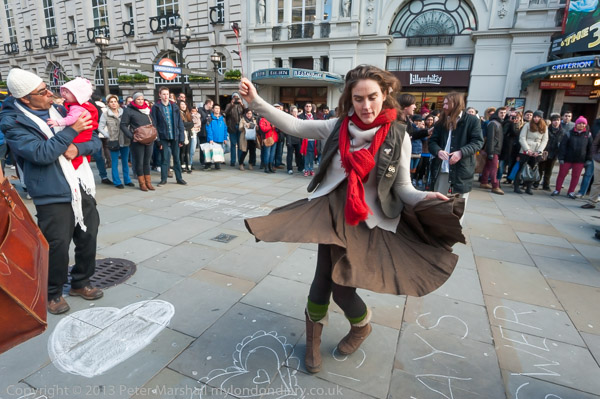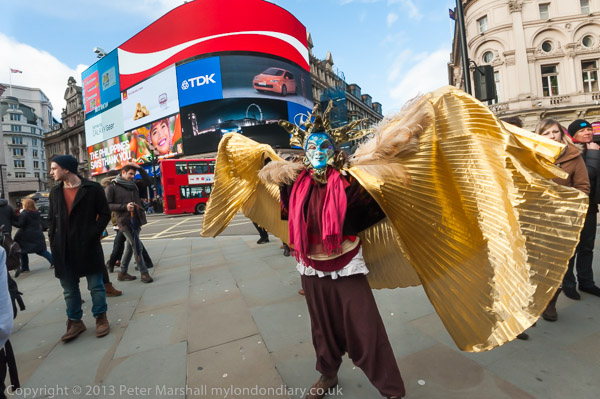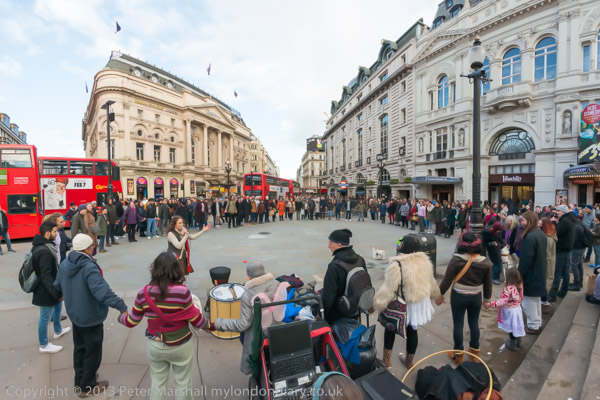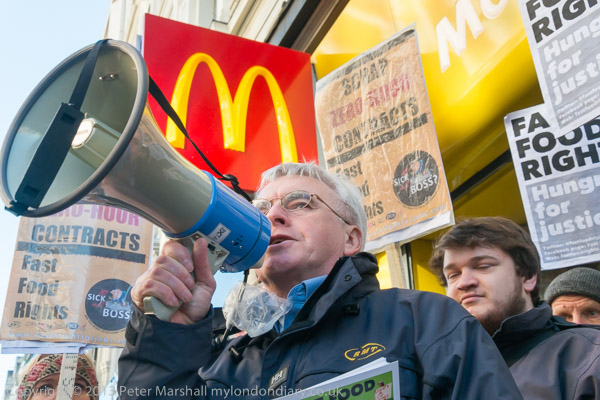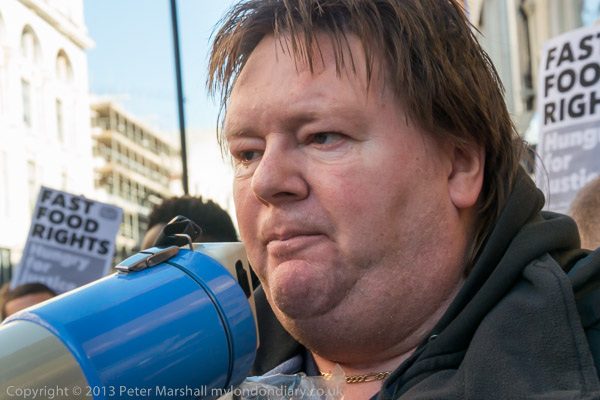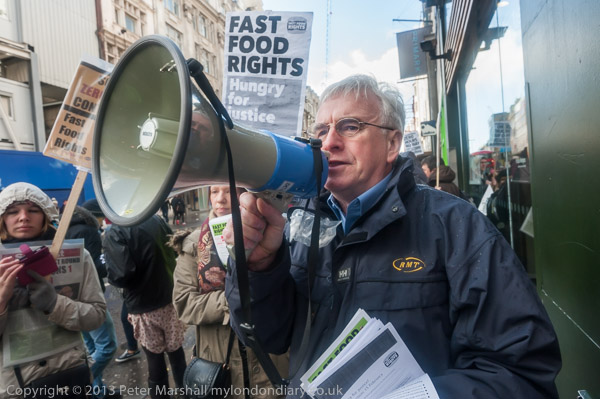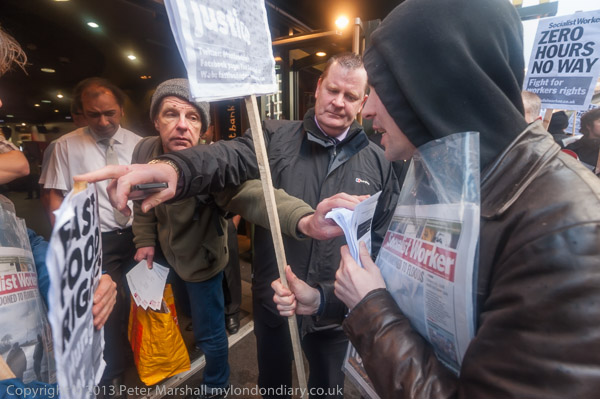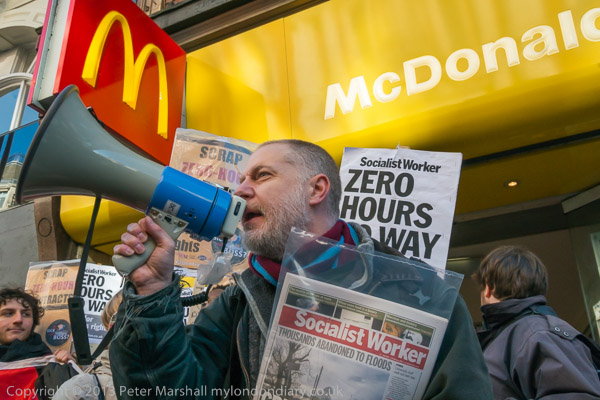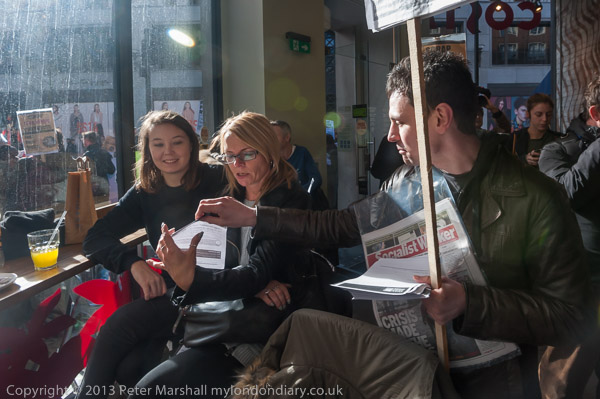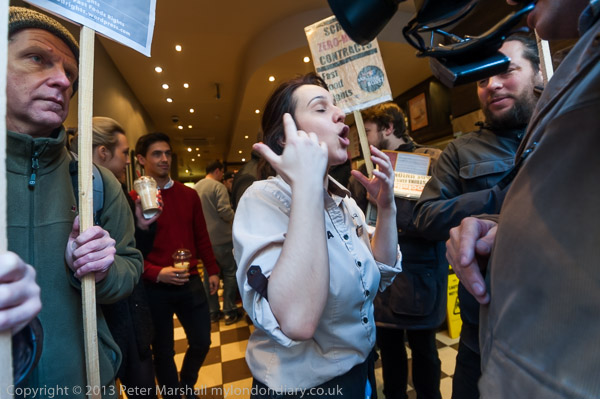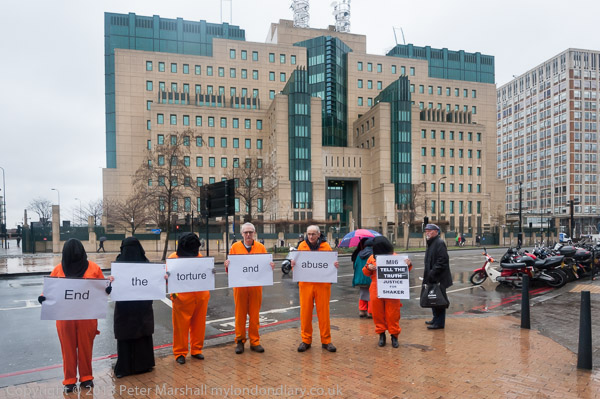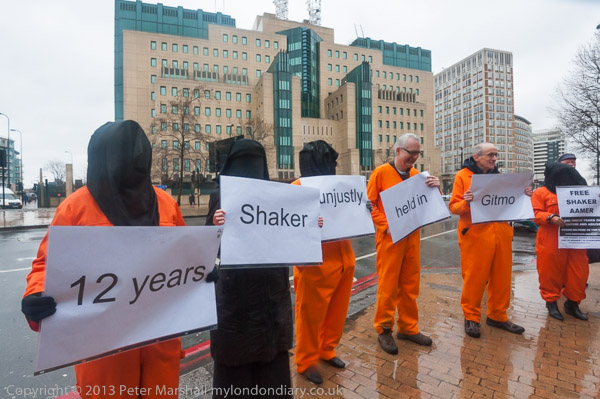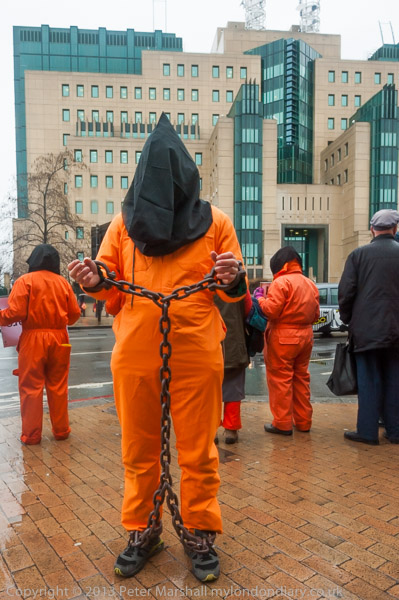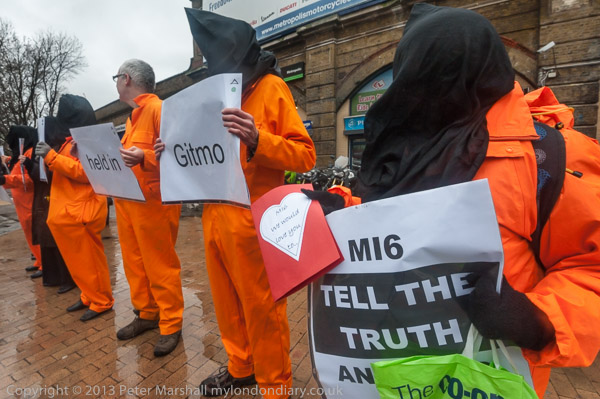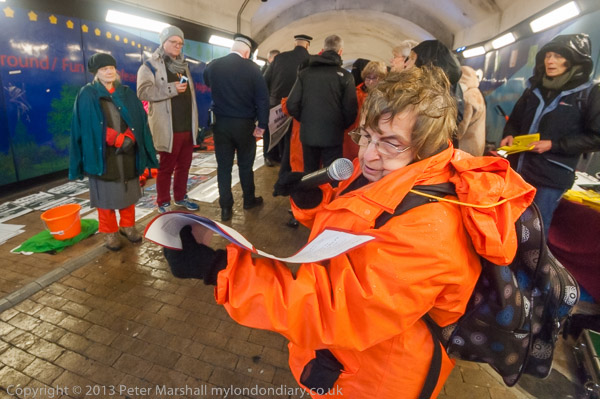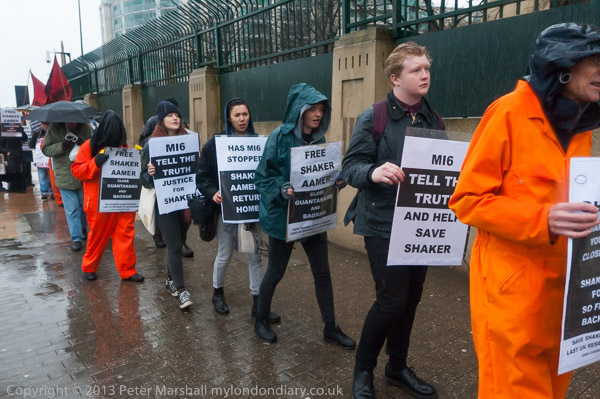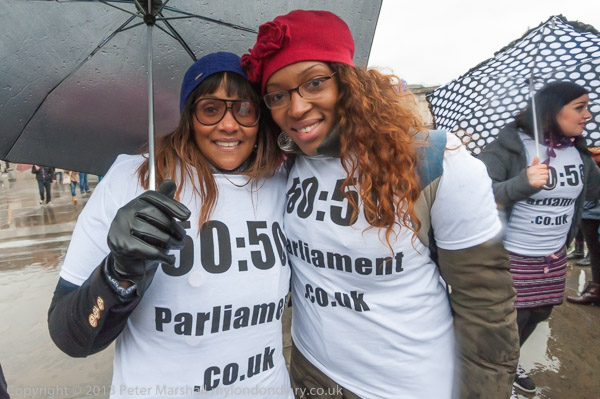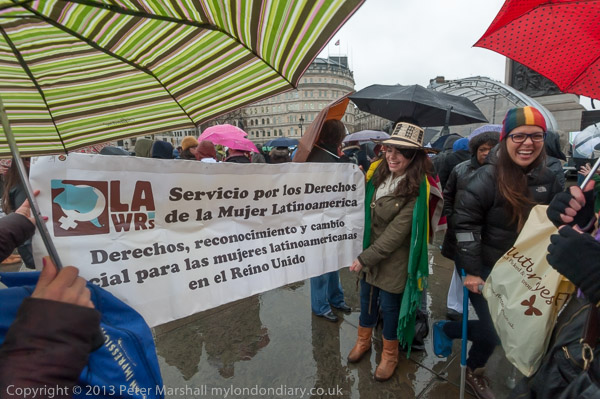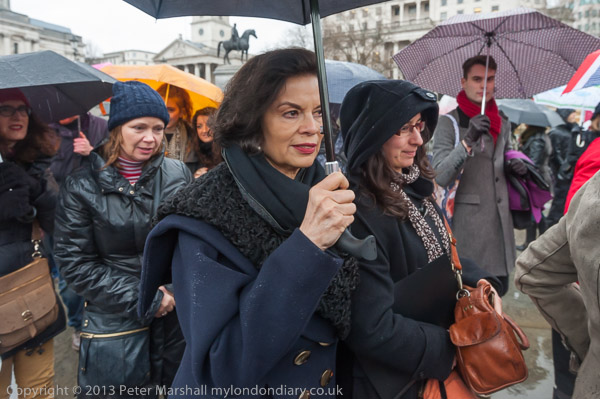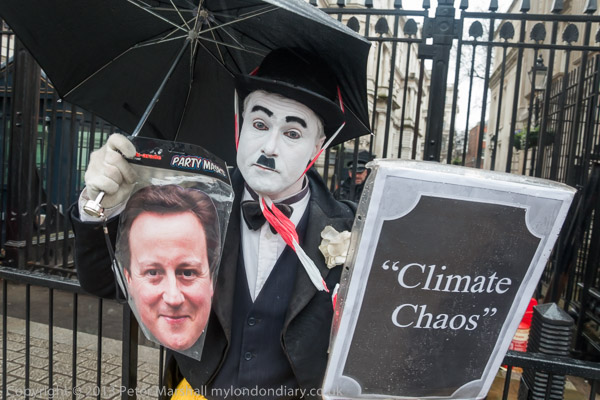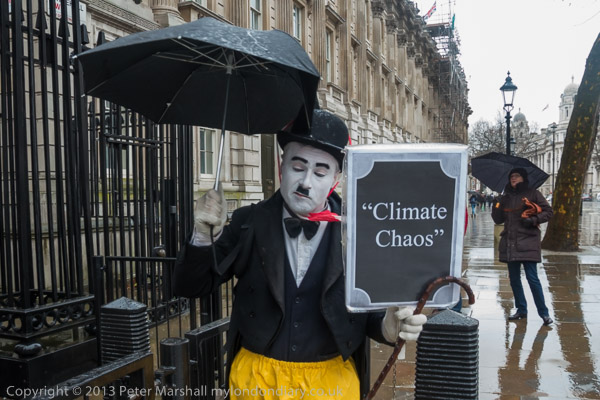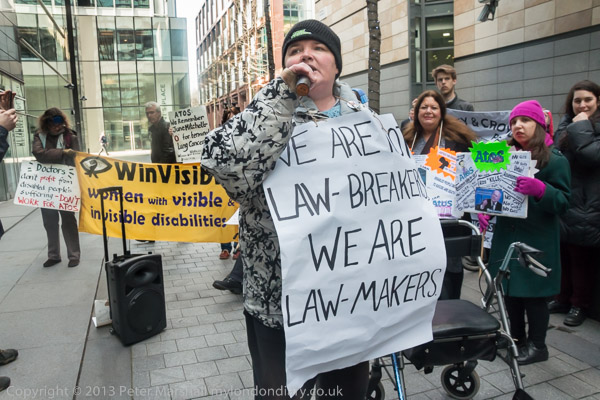
Paula Peters of DPAC speaking outside the Atos HQ in Triton Square, Euston
The only fast way to get around London is by bicycle. But a bike is something of a liability when actually taking pictures unless you can find somewhere truly safe to leave it, and such places are rare in the city. Lock one anywhere you can’t keep an eye on it and there is a fairly high chance it won’t be there – or won’t all be there – when you come back, especially if you ride a real thief magnet like a Brompton, relatively expensive and slips very easily into a car boot.
I get absorbed in what I’m doing when I’m taking pictures, often so absorbed with the images I don’t even notice important things on my camera like leaving the ISO on a silly setting. All I can think about is the rectangle in my viewfinder and the event that I’m viewing through it. Even if my bike was locked a few yards away I probably wouldn’t notice anyone taking an edge-grinder to the lock.
So although using a bike might have been the obvious solution to my travel problems on a busy Wednesday I didn’t think about it. It was a day with an unusually large number of protests – there were a dozen that I knew about, and others that I only found out about later. Most were part of a day of action around the country against Atos and the tests that it administers on disabled people to decide if they are fit for work. Thousands who they have said are fit die within a few weeks, and they have included people who are in comas or already deceased.
I wanted to cover at least one of these, and it seemed to make most sense to cover the main national protest in central London rather than the smaller events around the capital. And since this was to last from 10.00 am to 16:00 pm it didn’t seem to give me much chance of doing anything else.
But I knew that there wouldn’t be things going on all that time I would want to photograph and also my own union was organising another protest from 11.30 to 1.30 that I both wanted to attend and also felt some obligation to go to. There was also another event, a vigil I would like to photograph at 10.30 to 1pm and yet another from 11.30 until 1pm. It would have been tricky if they were all in more or less the same place, but there was over 3 miles between the two more distant of them.
It was a day that involved some fairly tricky planning with the Transport for London web site and the map. I ended up making use of six underground trains, one bus and several bits of walking, and in all I probably covered a dozen miles or so to get to the four events on top of my normal 20 mile each way train journey from home to London
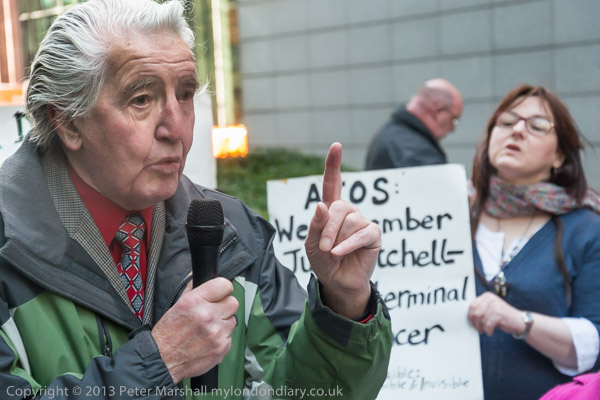
Dennis Skinner, Labour MP for Bolsover since 1970, speaking at Atos, Triton Square, Euston
I started at the Atos National Day of Action, arriving in Triton Square outside Atos’s UK HQ around 10.20am shortly before things really started there. I recognised many of those there from earlier protests, including Dennis Skinner who had really torn into what he called the “heartless beast” of Atos during the parliamentary debate triggered by a petition against Atos and was at least as fierce in his denunciation of them and the inhuman DWP policies of Ian Duncan Smith that drive them on this occasion. It was one of the times when I wished I’d been recording sound, though fortunately there were others present making videos, so I could concentrate on my job – though having people making videos does make it a lot harder to move around.
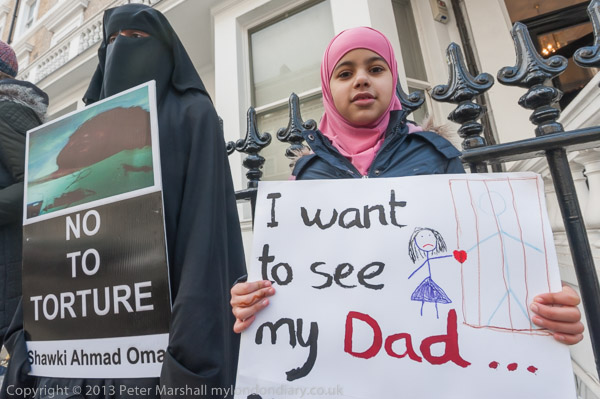
Narmeen Saleh Al Rubaye and her daughter Zeinab at the vigil for Shawki Ahmed Omar at the Iraqi consulate
Things quietened down a little around 11 and I hurried the short distance back to Warren St station and took the tube, changing at Green Park and on to Gloucester Road. A quarter-mile walk took me to the Iraqi Consulate in Elvaston Place for the Solidarity vigil for Shawki Ahmed Omar, where I apologised to his wife and daughter who I’d first met last May at the US Embassy for not being able to stay long, spent 5 minutes taking a few pictures then hurried back the quarter mile to the station, taking the tube to Hyde Park corner.
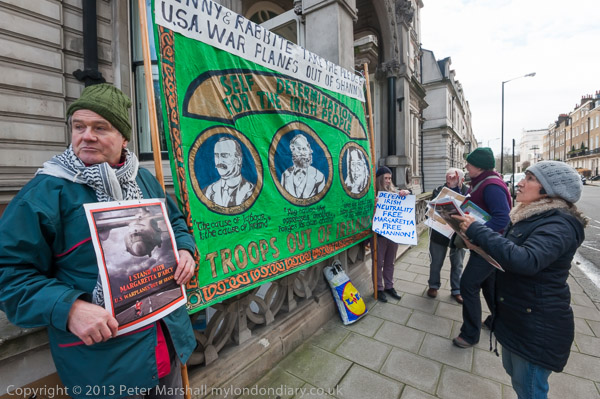
The Irish Embassy for the Free Margaretta D’Arcy picket was only a couple of hundred yards away, and again I apologised for rushing away after a little under 10 minutes, jumping on a bus to take me up Park Lane from the stop just a few yards down Grosvenor Place.
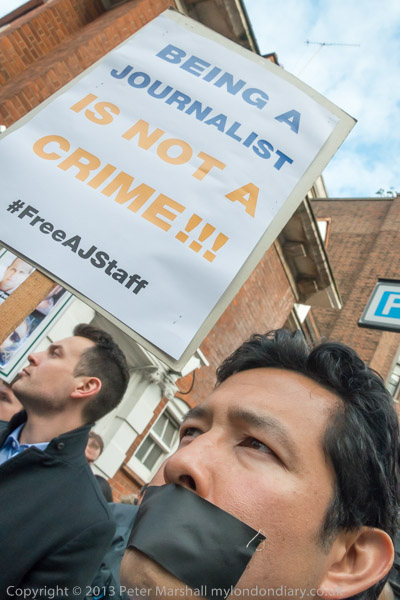
It wasn’t a long way to the Egyptian Embassy, but the bus was faster, even though I had to walk a couple of hundred yards further than necessary as I couldn’t remember which was the nearest stop, the Hilton or the Dorchester. Both are slightly curiously named as going north neither is particularly close to the hotel, and probably few guests to either come by bus. NUJ demands Egypt release jailed journalists was a larger protest and I worked there for around 15 minutes, photographing the protest and a letter being taken in to the Embassy asking for the release of the imprisoned journalists, but decided not to stop for the speeches.
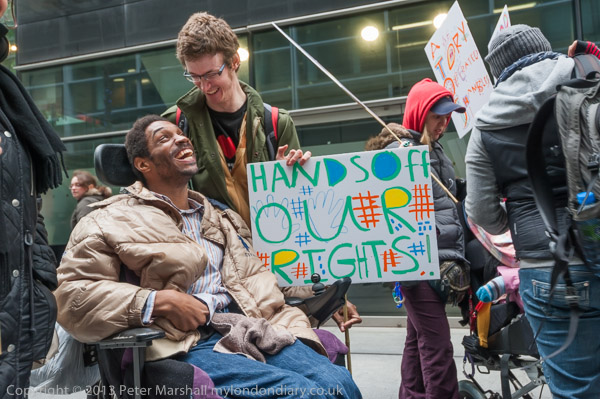
From there it was half a mile to walk to Green Park for the Victoria Line back to Warren St and the Atos protest in Triton Square. I’d hoped to be back in time for speeches at 12.30, but several minor hold-ups on the tube meant I was twenty minutes late, but I hadn’t really missed a great deal, and I stayed there until the event ended, rather earlier than planned. The finale was the release of a large net full of yellow balloons, and as usual I didn’t really manage to get a good picture, partly in this case because they were released before most of us were ready.
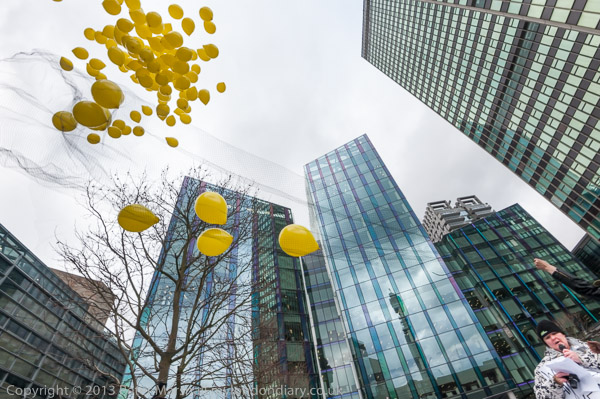
Some of the protesters were going on to protest elsewhere, but by then I felt I’d had enough. And I had a lot of post-processing to do, as well as writing stories about the four protests, so it was well after midnight before I finished work.
You can read the stories and see the other pictures I took on My London Diary:
Atos National Day of Action
NUJ demands Egypt release jailed journalists
Free Margaretta D’Arcy picket
Solidarity vigil for Shawki Ahmed Omar
